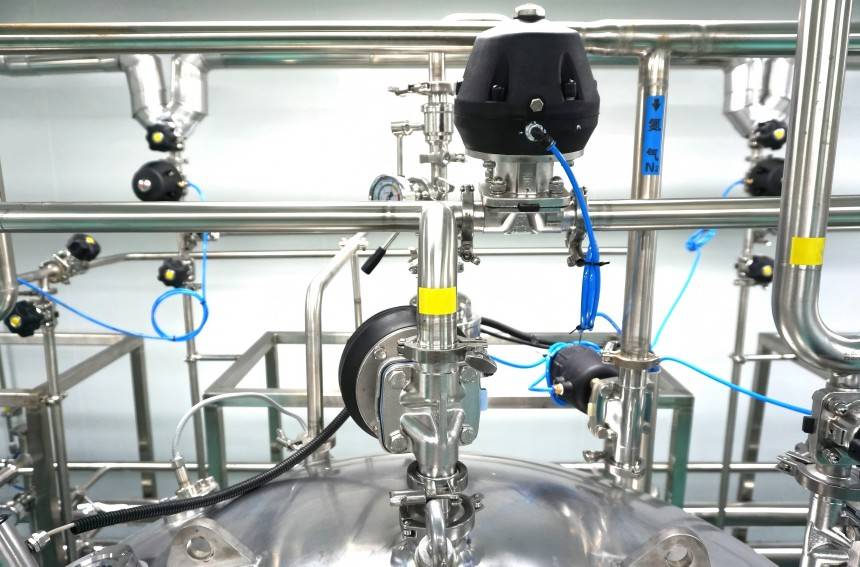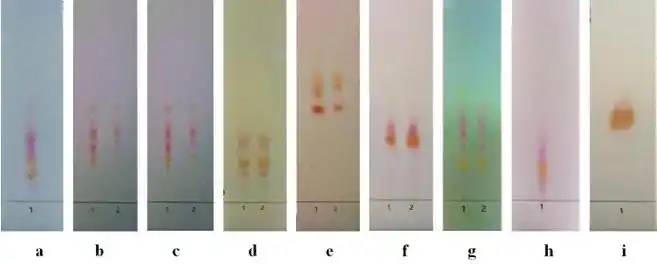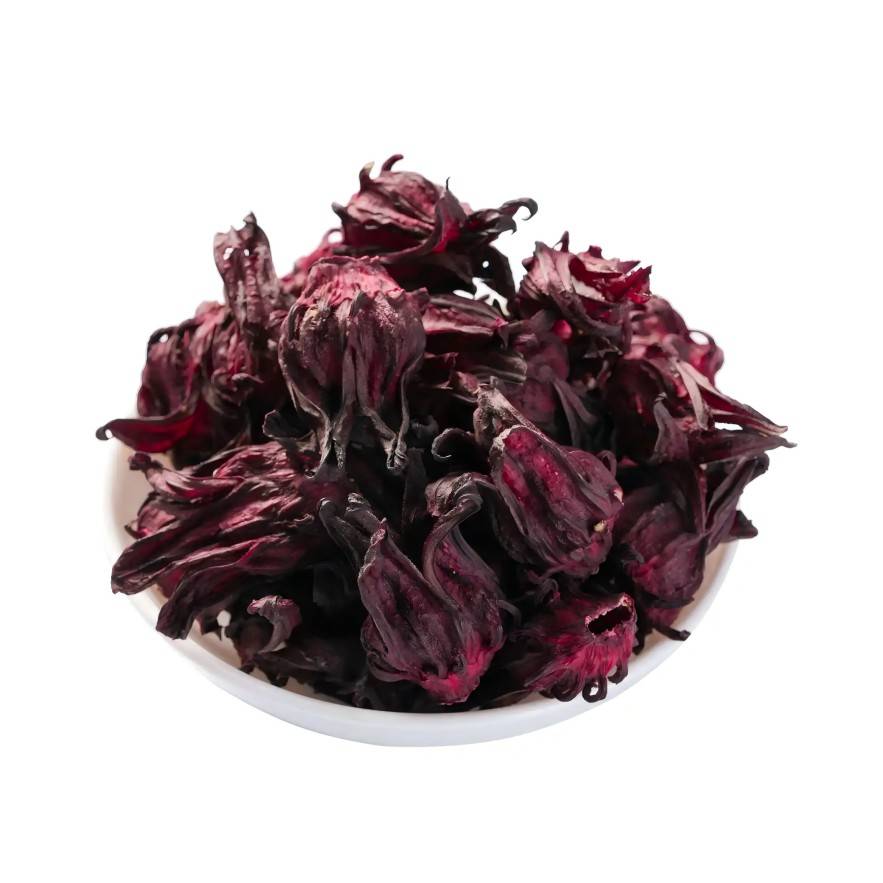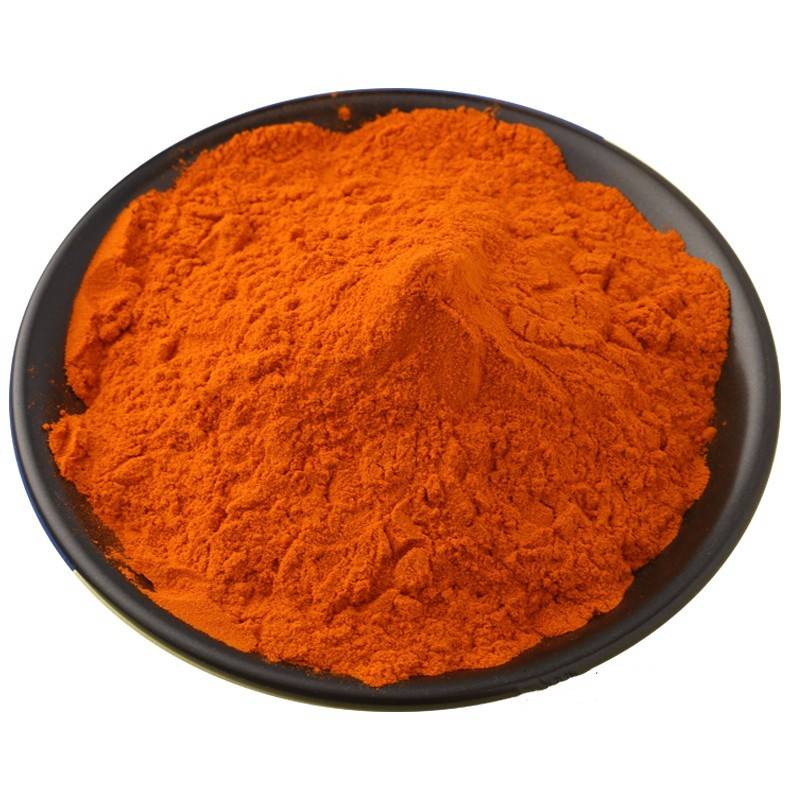自然な色の使用は何ですか?
合成着色料are mostly tar dyes, which not only have no nutritional value, but some are also harmful to the human body. Therefore, edible natural colors extracted from plants have recently received widespread attention from scholars at home and abroad, and there is a trend of replacing synthetic pigments. The types, extraction methods and development and application of natural colors are summarized below.
1種類
自然な色合い come from a wide range of sources, have complex compositions and are highly diverse. They can be divided into four main categories according to the extraction method: liquid or solid pigments extracted from animals and plants by juicing or solvent extraction; powdered pigments obtained by drying and grinding colored animals and plants; pigments that are fermented by microorganisms, the metabolites of which are separated into liquids or further processed into solid powders; and pigments made from natural products by enzymatic action. In addition to the turmeric, beetroot red, sodium copper chlorophyllin, paprika red, red yeast rice pigment, and carotene that were already in use, research has recently led to the development of corn yellow, sorghum pigment, radish red, rose bengal, gardenia yellow, tea pigment, indigo, sorghum red, black rice pigment, and safflower pigment. The development of China'の自然な色の業界は形を取り始めている。天然色の全国総生産量はすでに10万トン以上に達し、その中で最も代表的なものはカラメル色(すなわち、砂糖色)、クチナシ黄、クチナシ青、ウコン、アマランサス赤、パプリカ赤、茶色素などである[1]。
2抽出と分離
2. 1抽出法
溶剤抽出: The most commonly used method is to follow the principle of like dissolves like, based on the polarity of the extracted ingredients in the raw material and the different physical and chemical properties of coexisting impurities, so that the mass transfer process of the active ingredients transferring from the solid surface or inside the tissue of the raw material to the solvent. Solvent extraction methods include maceration, percolation, decoction and reflux extraction. Water can be used as a solvent for Natural Colour extraction using the maceration and decoction methods, and organic solvents can be used for extraction using the reflux method. The solvents used for extracting some Natural Colours are shown in Table 1.
超臨界流体抽出:これは、抽出のためにガスと液体の間の流体を使用します。流体は、優れた溶媒特性、低粘度、高密度、および良好な流動性、物質移動、熱伝達および溶解特性を有する必要があります。現在最も一般的に使用されている溶媒であるco2は、非毒性、不燃性、化学的に不活性で、安価で、純度が高く、環境に優しい。高圧下で溶質が液体中に溶解し、液体溶液の圧力を下げるか温度を上げると、密度と溶解度が低下して超臨界流体中に溶質が沈殿する。従来のプロセスと比較して、低い動作温度、簡単なプロセス、高効率、無公害の利点を持っています。rozzi[2]は、32-86°cおよび13.7800-48.2686 kpaにおけるトマト副産物からのリコピンの抽出を調べ、最大抽出速度は38であった。38℃- 34℃。478 6 kpa "
超音波抽出:Ultrasonic waves are elastic waves that can generate and transmit powerful energy. They can penetrate deeper into plant tissue cells than electromagnetic waves and remain there for a longer period of time. Ultrasonic waves can cause liquid to be broken into many small cavities that close instantaneously, generating an instantaneous pressure of up to 3,000 Mpa, i.e., cavitation, which causes plant cells to rupture. In addition, ultrasound also has multiple effects such as mechanical vibration, emulsification and dispersion, and crushing, which can transfer, diffuse and extract the effective ingredients in plants. Therefore, using ultrasound to extract pigments is easy and fast, does not require heating, and has high extraction efficiency, speed and effectiveness, without damaging the structure. Li Yunyang et al. [3] used ultrasonic technology to extract brown pigment from chestnut shells and compared it with the conventional method. The results showed that ultrasonic extraction saves time and energy and has a high extraction rate. The optimal process parameters for ultrasonic extraction are a mass ratio of 1:10, an aqueous ethanol solution of 30% as the solvent, and 2 extraction times at 70 °C (1 h each). Wang Zhenyu et al. [4] found that at an ultrasonic frequency of 30 KHz, the highest extraction rate was obtained using dilute H2 So4 as the extracting agent at a mass fraction of 2% for 40 min at 50 °C.

また、超音波を用いて桑の赤色素を抽出することでも良い結果が得られました。
Microwave extraction: Microwave technology has the advantages of rapid temperature rise, easy control, even heating, energy saving, etc. It can strengthen the extraction process, shorten the production cycle, reduce energy consumption, reduce waste, improve yield and extract purity, and has low operating costs and is environmentally friendly, with good development prospects. At present, reports on the use of microwave technology for the extraction of pigments involve alkaloids, flavonoids, tannins and other substances. Li Yu et al. [5] studied the microwave extraction of chamomile 黄色, using anhydrous ethanol as the extracting agent (the mass ratio of chamomile to anhydrous ethanol was 1:70), microwave power 800 W, extraction time 450 s, and extraction was carried out three times. Compared with the solvent extraction method, the extraction time was reduced from 12 h to 450 s, and the extraction rate increased from 88.6% to 91.1%. Cai Jinxing et al. [6] used a microwave-ultrasonic method to extract strawberry pigments and study their physical and chemical properties. The results showed that the combined treatment of microwave and ultrasound can break the bonds of pigments, break up tissue cells, and improve the extraction rate of strawberry pigments.
酵素法:植物の色素は、多くの場合、細胞壁に囲まれています。cellulaseβを破る使う-D-glucoside債券を破壊し細胞壁工場では、容易に成分を抽出する。この原理に基づいて、植物成分を抽出する前にセルラーゼを使って消化することで、有効成分の抽出速度を上げることができます。酵素を使用しているかどうかにかかわらず、抽出物の組成は同じであり、酵素による加水分解が植物成分を破壊しないことを示しています。
空気崩壊方法:このメソッド事実を使う植物組織の空気は圧縮圧力が突然発表し、発表した強い圧迫組織工場内に植物細胞壁と涙蒸気タービン発電機を壊し、弛緩構造工場では、容易に溶媒伸銅所の内部工場浸透し数として大きく伸びて連絡の表面积の有効成分を抽出するこの方法は、根、茎、樹皮、葉などの繊維状組織の抽出に適していますが、あまり研究されていません。
2. 2分離方法
Solution separation: The most common method is to use the different solubilities of the components of a mixture in a solution to achieve separation. For example, if the distribution coefficients of pigments in different polar solvents are different, select 3 to 4 solvents of different polarities (such as petroleum ether, chloroform, ethyl acetate and n-butanol) and perform stepwise extraction of the extraction solution from low polarity to high polarity to obtain extraction solutions with different polarities. Next, pigments can be separated at different pH values. For example, gradient pH extraction is a classic method for separating free anthraquinone derivatives and is also the most commonly used method for separating flavonoids. In addition, certain solvents or precipitants can be added to the sample solution to precipitate the separated substances in solid form through chemical reactions or by changing the pH or temperature of the solution, such as tannin pigments. For example, the precipitation of tannins with metal salts can be used for separation. Flavonoid pigments can also be separated using the precipitation method with lead salts. Adding a saturated aqueous solution of neutral lead acetate to an ethanol or methanol extract of traditional Chinese medicine causes flavonoids with o-dihydroxy or hydroxy groups to precipitate out.
膜分離:これは、外部エネルギーまたは化学的な電位差を駆動力として、混合物を分離、分類、精製、濃縮するために、天然または合成高分子膜を使用することを指します。顔料の分離には、顔料と不純物の分子サイズの違いを利用します。繊維性限外ろ過膜と逆浸透膜を用いることで、様々な不溶性高分子(多糖類やタンパク質など)を保持することができます。この方法は簡単で非常に効果的で、ココア顔料と赤酵母顔料の分離に使用できます。ペクチンなどの高分子物質を限外ろ過膜で90%以上除去した後、逆浸透膜で20%以上の固体に濃縮することも可能だ。室温で操作すると、膜が100%色素を保持することができます。アントシアニンの分離は、硫酸を含む水で抽出した後、限外ろ過膜を用いて糖などの低分子物質を選択的に除去することで、収率を2倍にすることができる[7]。

Column chromatography: refers to the use of different adsorbents or stationary phases to separate and purify pigments by column chromatography. For example, ion exchange resin column chromatography can be used to purify grape skin pigments and remove impurities such as sugars and organic acids; polyamide column chromatography is suitable for the separation of flavonoids, quinones, and phenolic pigments, such as safflower yellow pigments and red pigments; silica gel column chromatography is suitable for the separation of small molecule fat-soluble pigments; activated carbon column chromatography is used to separate water-soluble components, such as benzopyran pigments (anthocyanins, alizarin, and genipin, etc.). Macroporous adsorption resin has a strong adsorption effect on pigments and has a good adsorption and purification effect on a variety of Natural Colour. The adsorption and screening effect of the proposed separation substance using macroporous adsorption resin can achieve the purpose of separation. Most Natural Colors prepared using traditional processes have strong hygroscopicity. However, after being treated with a macroporous adsorption resin column chromatography, hygroscopic components such as sugars, inorganic salts, and mucus in the aqueous or alcoholic extract can be effectively removed, enhancing the stability of the product. Shen Yonggen et al. [8] found that X-5 resin has strong adsorption capacity at a pH of 4 and a flow rate of 2.0 mL/min. At room temperature and a desorption flow rate of 1.5 mL/min, the elution effect is best when 60% ethanol is used as the desorbent. Purification of purple sweet potato pigment with it can obtain a high purity pigment. Rukye Musa [9] used AB-8 macroporous adsorption resin column chromatography to enrich and purify the purple sweet potato extract, obtaining high-quality, high-purity anthocyanin-based Natural Colour.
薄膜クロマトグラフィー(tlc):原理はカラムクロマトグラフィーと基本的に似ていますが、主な違いは、tlcは、吸着剤の粒子サイズがより細かく、一般的に250メッシュ以上であり、粒子サイズが均一であることです。tlc法は、アントシアニン、フラボノイド、カロテノイドなどの個々またはクラスの顔料の分析に使用できます。一部の研究者は、tlcを用いて紅心大根の色素を分析し[10]、色素量、溶出液、溶出時間などが色素分離に及ぼす影響を調べた。輔Zhengshengらます[11]との蕎麦つゆを選択しシリカゲルG静止期と容積率(大地量色素のなかには粘性液体する水色素1:1)、混合[無水ethanol-water(例)や[無水エタノールethanol-water-petroleum(6:1:1)]開発剤で、開発に要した期間は挙げられるミン開発距離は6 ~ 10 cmであった。これらの条件を使用すると、顔料は完全に分離され、斑点は明確かつ濃縮されました。
高性能液体クロマトグラフィー(hplc):未知の試料の分離や分析に用いられる。吸着クロマトグラフィー、分布クロマトグラフィー、イオンクロマトグラフィー、分子排除クロマトグラフィーの4種類があります。hplc分析は、特に質量分析や核磁気共鳴と組み合わせて使用する場合に、サンプル中の未知の成分を特定するために使用することができます。また、クロマトグラフィーのピークの高さまたは面積に基づいて、定義された条件下で測定される成分の量と比較して、サンプル中の成分の正確な含有量を決定するためにも使用できます。また、未知の微量化合物の構造を迅速に決定するためにも使用できます。liu xiaolingら[12]は、液体クロマトグラフィー質量分析法(hplc-ms)を用いて、ドラゴンフルーツ中の色素の異なる成分を分離し、分離された成分の構造を同定した。その結果、ドラゴンフルーツの果肉と果皮の色素はいずれもベタイン色素で、果肉から4つのベタイン色素が分離された。

高速反電流クロマトグラフィー(hsccc: high-speed counter-current chromatography)近年急速に発展している液体-液体分離クロマトグラフィー技術。依存の方向よ四フッ化エチレン蛇纹岩管と遠心力発生が特定の高速の惑星自転によってcarrier-freeを安定的に留保位相に伝えることを蛇纹岩管で静止静止位相一方向にモバイル・位相低速で連続して抽出および分離の物质の目的を達成したがあります。利点は、キャリアを使用して、不可逆的な吸着、サンプルの変性や汚染、クロマトグラフィーピークの異常なテーリングを除去する必要がないことです。試料は定量的に回収でき、非極性成分と極性成分の分離に適しています。この方法は赤ワインからアントシアニンを、クチナシからカロテノイドを分離するために用いられてきた。
遠心液体クロマトグラフィー:従来のカラムクロマトグラフィーを大幅に改良。カラムの代わりに皿状の円盤を使い、その上に吸着剤が広がっています。その後、試料を添加して溶出し、遠心力の作用により順次成分が分離され、検出器により区分されます。操作は完全に自動化されています。この方法は分離サイクルが短く,操作が容易であるという利点がある。色帯に応じて成分を収集することができます。吸着剤としては、通常の薄板クロマトグラフィーで使用されるシリカゲルやアルミナのほか、イオン交換樹脂やデキストランゲルも使用できます。
3アプリケーション
ぶどう红速色素:主成分はマルビニジンで、通常、ワイン製造に使用されるブドウの皮から硫酸とともに抽出される。phは色相の変化に影響し、溶液が酸性であればあるほど赤色が鮮やかになる。酸性環境では安定であるが、光や熱に対してはあまり安定ではない。飲料に使用すると、色を高め、品質の低下をある程度防ぐことができます。
無窮色素ハイビスカスはアフリカ原産の樹木で、熱帯・亜熱帯地域に広く分布する一年草。ハイビスカスの萼は赤紫で、色素はアントシアニンの一種。主成分はデルフィニジンで、次にシアニジンが続く。水性エキスは特徴的な酸味を持ち、デペクチンエキスは天然の酸味剤としても使用できます。この色素は、ブドウの皮膚色素と性質が似ています。飲料に着色するのに使用すると、長期間保存すると褐変しやすい。

クルクミン:比較的安定した顔料で、明るい色と卓越した光沢があります。耐熱性と耐光性があり、主にaとして使用されます黄色い着色料. It has the functions of clearing away heat, stimulating the appetite and strengthening the spleen, promoting digestion, and coloring. It is mostly used in the production of pastries, candies, canned goods, soft drinks, pickles, etc., and has particularly high medicinal value. It has been widely used in the pharmaceutical industry. Curcuminoids are the main active ingredients in the Chinese herb turmeric, which contains about 3% to 6% of them, including curcumin, demethoxycurcumin and bisdemethoxycurcumin. The similar structures of these three phenolic pigments (interconversion between the benzene ring diketone structure and enone, phenolic hydroxyl group on the benzene ring) give them similar pharmacological effects in many ways, such as anti-inflammatory, antioxidant and free radical scavenging, and regulation of blood lipids. In particular, their antimutagenic and anticancer effects have become a research hotspot, but the slight structural differences mean that the three curcuminoids have very different abilities in terms of anticancer and antioxidant effects. For example, demethoxycurcumin is best at inhibiting tumor cell proliferation caused by TPA, followed by curcumin; and demethoxycurcumin is best at preventing the formation of lipid peroxides in cells, followed by demethoxycurcumin. Therefore, extracting a purer mixture of the three curcuminoids from turmeric and further separating them can provide a good guide and practical value for actual drug production.
リコピン: found in ripe tomatoes, as well as in watermelons, grapes and some other fruits and vegetables. 1 kg of fresh, ripe tomatoes contains 0.02 g of lycopene. Studies have shown that lycopene accounts for about 50% of the carotenoids in human serum and is most easily absorbed, metabolized and utilized by the body. It is also found in high concentrations in the testicles, adrenal glands and prostate. Since mammals cannot synthesize carotenoids (including lycopene) in the body, lycopene in the human body mainly comes from fruits and vegetables, especially tomatoes and tomato products. Epidemiological studies have shown that lycopene can reduce the risk of lung cancer, stomach cancer, prostate cancer, pancreatic cancer, colon cancer, esophageal cancer, oral cancer and uterine cancer. The 1997 report of the American Cancer Research Conference and the American Cancer Society Annual Meeting ranked tomatoes as the top anti-cancer food. At present, the world&#リコピンの39の開発と生産は、主に植物のトマト、化学合成および他の方法から抽出され、イスラエル、日本、ロシアなどの国だけでなく、ロシュとbasfなどの多国籍企業が主導的な地位にあります。
サフラン:黄色い色素光や熱に比較的安定し、phの影響を受けない。これまでの研究で、血液循環を促進する紅花の有効成分は、水溶性の紅花黄色素に主に集中していることがわかっている。サフラン黄色色素は、冠状動脈拡張、抗酸化、心筋保護、血圧低下、免疫抑制、脳保護などの薬理作用の様々なカルコノイド化合物です。ベニバナの効能を評価する主な指標の一つに、ベニバナ黄色素の含有量があります。紅花の黄色素は漢方薬の紅花の薬理成分であり、毒性の副作用はないという研究結果がある。血小板活性化因子によって誘導される血小板の凝集と放出を阻害し、血小板活性化因子の血小板受容体への結合を競争的に阻害することができる。これは、直接医療だけでなく、健康製品、食品、化粧品、繊維着色料に使用することができます。
パプリカOleoresin:熟した唐辛子に含まれる自然な色。◆主要成分はβ-carotene capsanthinやcapsorubin流通量xanthophyll家に属する。天然色研究のホットスポットであり、国内外の広い市場と高い応用価値を持っています。パプリカを抽出して焙煎した粉末顔料は、水溶性、耐熱性、耐塩性、耐酸性、金属耐性、微生物耐性などに優れている。発色力が強く、分散・隠蔽力に優れています。食品、医薬品、化粧品の生産に広く使用できる高品質な天然色です。一般的な天然顔料に比べて高い価格で販売されているだけでなく、生産コストも低くなっています。
ゼインとゼインアルコール広く製薬、食品、包装業界で使用することができます。ゼインは、コーンスターチ製造の副産物(コーンゼイン)から抽出されるカロテノイド色素で、食品や化粧品の着色に使用できる天然着色剤です。ゼインアルコールは食用タンパク質の一種で、成膜性、接着性、防湿性に優れています。これは、医薬品の防湿外装コーティングや食品の鮮度維持コーティングに使用できます。ゼインは、優れた成膜性、接着性、防湿性を持つ食用タンパク質です。製薬業界では耐湿性の外装コーティングに、食品業界では鮮度を保つコーティングに使用されています。
黄色:科クチナシ安全で無毒であり、胆嚢機能と解毒を促進し、自然で鮮やかな色を提供するという利点から、近年注目されています。クチナシは昔から食用や染色用の色素として使われてきました。クチナシ黄は、デンプン、タンパク質などの染色能力に優れ、菓子、パスタ、飲料、キャンディーなど様々な食品に広く使用されています。医療や化粧品の分野でも使用されています。安全性が高く、安定性が高く、毒性がなく、副作用もありません。そのため、国内外のit需要は年々増加しています。
赤紫色赤い色素:Amaranth stems and leaves are purple or green in color, rich in nutrients, and the seeds can be used as a topping. The purple stems and leaves contain bright pigments that can be used as food dyes or to color medicinal liquids. They are non-toxic, harmless, and stable. Natural amaranth red pigment is made from red amaranth (mature period is June to August), obtained by physical extraction and refinement. Its main components are amaranthine and betaine. It is a dark purple-red dry powder that is highly soluble in water and soluble in low-grade ethanol. Its solution is a clear purple-red color in the pH range of 2 to 7, with a soft and natural hue. Its physical and chemical properties are similar to those of the internationally-used ビーツと赤い色素, and it is suitable for coloring frozen foods and beverages that are stored for a short period of time.
くるみ色素:クルミはユグランス科ユグランス属の植物です。薬草、染料、油の機能を兼ね備えた特殊な換金作物です。緑クルミの皮は、抗真菌・抗腫瘍の薬効があるだけでなく、天然の色や染料としても使用でき、食品、化粧品などに広く使われている[13-14]。
4展望
現在、中国は比較的少ない種類の天然食品着色料を開発し、利用しています。ほとんどは生産条件や季節によって制限され、原料源は不安定です。また、原料は成分が複雑で、顔料の含有量が少なく、製造コストが高いため、広く普及することができません。しかし、技術の進歩により広く利用されるようになった。最初に商業的に使用された天然色は単に植物エキスであった。将来的には、品質が高く、品質基準が統一され、賞味期限が長くなることが期待されており、自然な色への需要はますます高まっています。ますます多くの食品および飲料加工会社が合成色を自然な色に置き換え、より多くの顧客が自然で健康的なライフスタイルを追求することを促進します。したがって、自然な色の開発と利用を加速することは、人々を保護するための肯定的かつ広範な意義を持っています'の健康と農業と副業製品の経済的価値を向上させる。
参照:
[1] mosley-brown n . medicinal plants [m]。北京:中国友好出版社、2000年:59。
[2] Rozzi NLます。トマト加工副産物からのリコピンの超臨界抽出[j]。の農産物や食品化学の雑誌、2002年、(9):2638-2643
【3】李y、宋gs。超音波を用いた栗殻色素抽出に関する研究[j]。^ a b c d e f g h i『科学技術史』、2003年、57-58頁。
【4】王振宇、趙信。超音波を用いた大花クイの色素抽出に関する研究[j]。2003年森化学工業23(2):67。
[5] li yu, liu minjie, du youzhen, et al。マイクロ波場におけるカモミール黄色色素の相乗抽出に関する研究[j]。広東微量元素科学,2004,11(9):48 - 52。
[6] cai jinxing, liu xiufeng, li zhaomeng, et al。クロロゲン色素のマイクロ波超音波法による抽出とその物理化学的性質に関する研究[j]。2003年の生产と科学研究の経験29(5):69 - 73。
[7]王を打ち破ることができた。膜分離技術の食品産業への応用[j]。^『官報』第1721号、大正12年(1880年)12月18日。
【8】沈永根、上光信臣。紫さつまいも色素の抽出と精製[j]。^『仙台市史』通史館、2004年(平成16年)6月26日、12- 12頁。
[9] ru k . y . m . w . zheng, y . p . huang, et al。サツマイモからの天然色の抽出と分離[j]。日本学術振興会(日本学術振興会)、2003年(平成15年)4月18日:559 -593。
[10] forgacs e .天然色素の薄層クロマトグラフィー:新たな進歩[j]。^「journal of liquid chromatography and related technologies, 2002, 25(10-11): 1521-1541」。journal of liquid chromatography and related technologies(2002年10月11日). 2015年10月15日閲覧。
[11] fu zhengsheng, xue huali, wang changqing, et al。薄層クロマトグラフィーとカラムクロマトグラフィーによる蘭州紅心大根からの色素分離に関する研究[j]。2004年(平成16年)4月25日:ダイヤ改正。
[12] liu xiaoling, xu shiyin, wang zhang。ピタヤ色素の基本特性と構造同定[j]。2003年食品生物学と技術第22(3):62-75に。
[13]王少林、王少東、劉金芳。juglans regia l .の薬用ハーブの同定と抗腫瘍効果の研究[j]。 ^『産経新聞』産経新聞社、1995年(平成7年)4月1日、40-42頁。
[14] zhang yeping, yang zhibo, su jingzhou, et al。a review of chemical and biochemical studies and biological activities of juglandaceae plants [j]。中国の漢方薬,2001,32(6):559-561。


 英語
英語 フランス
フランス スペイン
スペイン ロシア
ロシア 韓国
韓国 日本
日本




